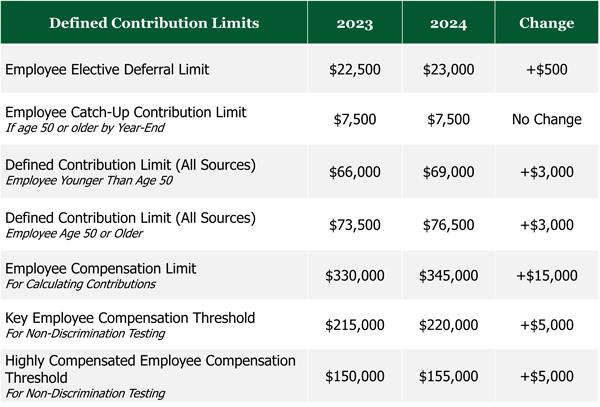Year-End Tax Payments
If, while doing year-end planning, it is determined you have underpaid tax throughout the year, you can change your withholding for your last pay period or two.
Goal – To avoid underpayment penalties. Withholding is deemed to be paid evenly throughout the year, so by withholding a larger amount at year-end, you might be able to reduce or eliminate the underpayment penalty.
INCOME AND PORTFOLIO PLANNING
Roth Conversions
If you/your household is in a lower tax bracket for 2023 (due to business loss or other known changes) and you have an IRA(s), you may want to consider converting a portion or all of the IRA to a Roth IRA. Individuals should consult their tax advisor regarding their specific situation.
Goal – To pay less tax on the amount converted today vs. what you might have to pay someday in the future when you take it out. Roth accounts grow tax-free.
Tax Loss Harvesting
If you have securities/stocks in a loss position close to year-end, consider selling them to realize the capital loss.
Goal – To use the capital losses to offset capital gains and if they are not fully used, carry forward indefinitely.
Note – To avoid complicated tax rules (“wash sales”), it may be recommended that you reinvest the proceeds in something similar to the security/stock you sold, but not the same one.
Trust Distributions
Trusts reach their highest tax bracket of 37% at $14,451 of taxable income. Distributions from a tax-paying Trust shift income from the Trust to the Beneficiary. If you are in a lower tax bracket, you could reduce your overall taxes paid between you and the Trust.
Goal – Pay fewer tax dollars between you and a trust for your benefit. Distributions through March 6, 2024, can be counted for 2023 if elected.
SCHEDULE A – MAXIMIZING ITEMIZED DEDUCTIONS
Bunch Medical Expenses
If you and your family have incurred a large number of medical expenses this year, make sure the majority, if not all, are paid before year-end.
Goal – If itemizing, this would maximize the amount you could deduct on your return.
January’s Mortgage Payment
Make January’s mortgage payment at the end of December.
Goal – If itemizing, this would move more deductible mortgage interest to the current year.
Investment Interest Expense
At year-end, if you are looking to pay down a line of credit or loan, make sure you are first paying off any accrued deductible interest. For example, accrued interest on credit lines or margin loans used for business or investment purposes. Any additional paydowns should be applied to the line of credit that has been used for personal purposes. Your Certified Public Accountant (CPA) or financial advisor should be able to help you with that determination.
Goal – To maximize the tax deduction for interest paid.
Charitable Giving and Standard Deduction Planning
If you donate to charities but notice on your tax returns you are not itemizing, you might want to consider “Charitable Stacking.” You can discuss this strategy more with your tax adviser.
Goal – Optimize your giving while utilizing the increased standard deduction.
Cash Charitable Contributions
Contributions made to public charities are deductible up to 50% of AGI. This limit is increased to 60% of AGI for cash gifts and 30% of AGI for appreciated non-cash assets held more than one year. Contributions more than these deduction limits may be carried over up to five subsequent tax years.
Goal – To eliminate income tax liability in 2023 through cash gifts to charities.
Consider a Donor-Advised Fund (“DAF”)
A “DAF” is a charitable investment account. From this account, you can direct the funds to go to the majority of public charities. If you donate cash to the donor-advised fund, you get a deduction of up to 60% of adjusted gross income. If you donate appreciated securities to the donor-advised fund, you can deduct up to 30% of adjusted gross income.
Goal – Help the charity(s) of your choice, lower income taxes in a high-income year, and excess contributions carry forward five years.
Note – Talk to your adviser about possibly giving other appreciated assets like real estate, partnership interests, or private stock.
Non-Cash Property – Need an Appraisal?
If you have made a contribution of non-cash property worth $5,000 or more, you will need a qualified appraisal (Does not apply to stock/securities that are valued on an ongoing basis).
Goal – Properly document large non-cash gifts so they will be deductible on your tax return.
OTHER ITEMS
Fund 529 Plans Before Year-End
If considering a 529 plan contribution in the coming months, make it before year-end. There are a number of states which allow a deduction or credit for contributions. Growth in these funds is also tax-free.
Goal – Save for educational expenses and get a state tax benefit.
As always, if you have any questions relating to the above year-end considerations, please contact your TFO Family Office Partners adviser. We would be happy to help.




